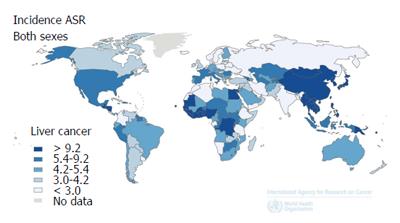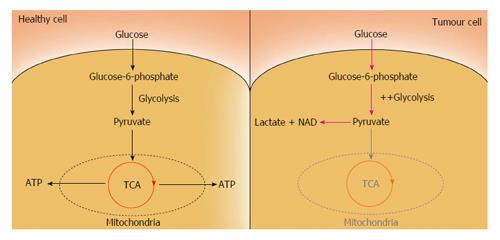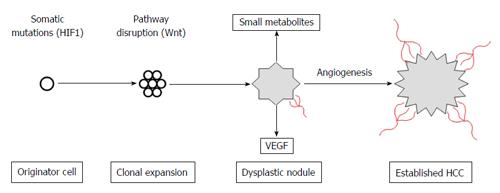Copyright
©The Author(s) 2016.
World J Hepatol. Apr 8, 2016; 8(10): 471-484
Published online Apr 8, 2016. doi: 10.4254/wjh.v8.i10.471
Published online Apr 8, 2016. doi: 10.4254/wjh.v8.i10.471
Figure 1 Global incidence of hepatocellular carcinoma.
Sourced from GLOBOCAN 2012.
Figure 2 Independent risk factors of cirrhosis and hepatocellular carcinoma.
HIV: Human immunodeficiency virus; HCC: Hepatocellular carcinoma.
Figure 3 Warburg theory of heightened glycolysis in tumor cells.
TCA: Tri-carboxylic acid cycle; ATP: Adenosine triphosphate; NAD: Nicotinamide adenine dinucleotide.
Figure 4 “Angiogenic switch” in hepatocellular carcinoma.
VEGF: Vascular endothelial growth factor; HCC: Hepatocellular carcinoma; HIF 1: Hypoxia inducible factor 1.
Figure 5 Univariate analysis of discriminatory urinary variables from an Egyptian cohort, comparing values from healthy controls, cirrhosis group and hepatocellular carcinoma group.
Discriminatory variable A: Creatine; B: Trimethylamine N-oxide (TMAO); C: Glycine; D: Carnitine. Adapted from Shariff et al[125]. HCC: Hepatocellular carcinoma.
- Citation: Kim JU, Shariff MIF, Crossey MME, Gomez-Romero M, Holmes E, Cox IJ, Fye HKS, Njie R, Taylor-Robinson SD. Hepatocellular carcinoma: Review of disease and tumor biomarkers. World J Hepatol 2016; 8(10): 471-484
- URL: https://www.wjgnet.com/1948-5182/full/v8/i10/471.htm
- DOI: https://dx.doi.org/10.4254/wjh.v8.i10.471













